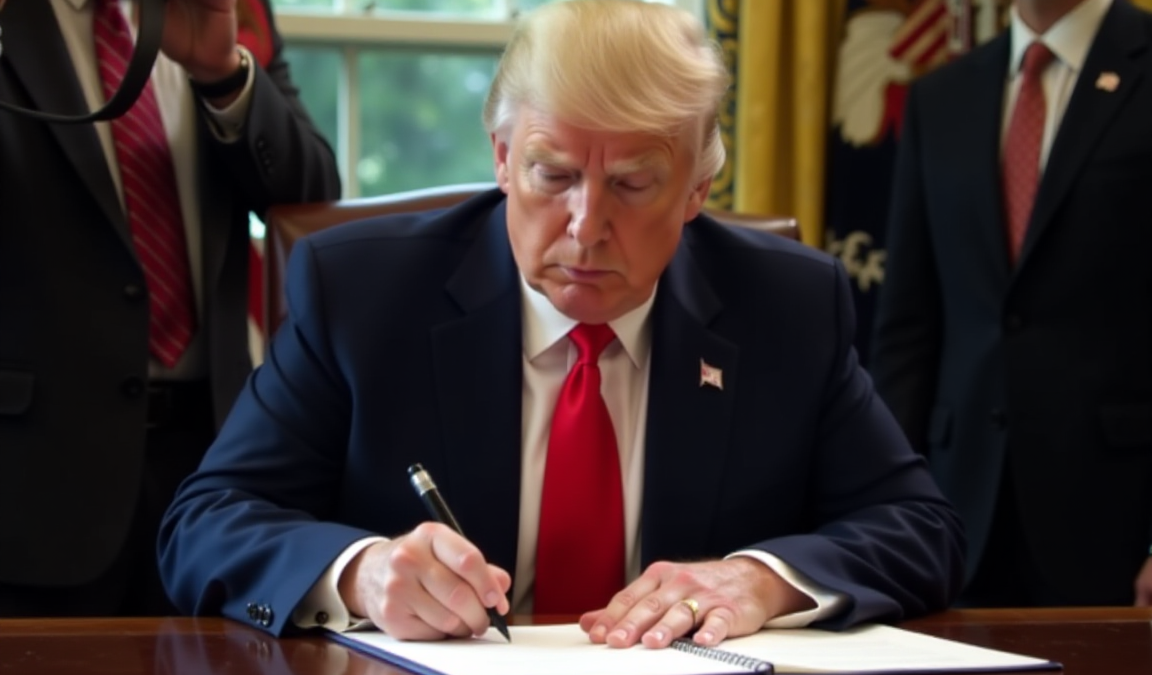A stark warning has been issued from the top echelons of economic analysis: President Donald Trump’s aggressive immigration crackdown, which the White House claims is deporting 750 immigrants a day, is actively constricting the nation’s labor supply and could be on the verge of unleashing a dangerous inflationary spiral.
The bombshell forecast comes from Mark Zandi, the chief economist at Moody’s, who told Fortune that if the current pace of deportations continues, the inflation rate will surge from its current 2.5% to somewhere close to 4% “by the time it hits its peak early next year.”
This isn’t just a theoretical model; Zandi says his prediction is rooted in the alarming signals already flashing within the U.S. economy.
“Foreign-born labor force is declining, and the overall labor force has gone flat since the beginning of the year,” he explained.
That’s causing tightening in a lot of markets, adding to costs and inflation.
The fingerprints are all over the data
The evidence, Zandi argues, is undeniable. On Thursday, the Labor Department reported that the producer price index (PPI)—a key measure of wholesale inflation—rose a blistering 0.9% from June to July, the largest monthly jump since 2021.
A surge in the cost of services was responsible for more than three-quarters of that increase.
Zandi contends that the impact of a shrinking immigrant workforce is visible everywhere, from construction sites to childcare centers.
He estimates that the annual number of immigrants, both legal and undocumented, has collapsed from a peak of roughly 4 million in 2023 to a mere 300,000–350,000 today. “That’s a massive change,” he said.
This labor vacuum is driving up costs in sectors that have long relied on immigrant labor. The latest PPI report showed fresh and dry vegetable prices, for instance, surged by almost 40%. “You can see it in meat prices, agriculture, food processing, haircuts, dry cleaning,” Zandi said.
The fingerprints of the restrictive immigration policy are all over the CPI and PPI numbers we got this week.
A tale of two theories: supply shock or demand slump?
This stark diagnosis places Zandi firmly on one side of a widening chasm that is splitting the economic community. In the wake of a shock July jobs report that showed weak hiring, two very different theories have emerged to explain the slowdown.
Zandi’s camp—which includes heavyweights like Morgan Stanley, Barclays, and Bank of America—believes the U.S. is suffering from a severe labor supply shock.
The problem isn’t a lack of jobs, but a lack of workers, driven by border closures and what Zandi calls “self-deportations.”
“Immigrants are scared. They’re leaving the country, they’re not coming in, they’re not going to work,” he said.
If this is true, the Federal Reserve can hold interest rates steady, as rate cuts cannot magically create more workers. “Rate cuts won’t bring more immigrants into the country,” Zandi stated.
The other camp, however, sees a classic demand slowdown, where businesses are pulling back on hiring amid growing economic uncertainty. In this scenario, Trump’s immigration policies are a secondary factor, and the Fed may need to cut rates to stimulate a weakening economy.
A chorus of concern
The White House has forcefully pushed back against the notion that its policies are fueling inflation.
Spokesperson Abigail Jackson told Fortune the administration is “focused on protecting the American workforce” and tapping the “untapped potential” of a domestic workforce where one in 10 young Americans are neither working nor in school.
She claimed that since Trump returned to office, “100% of job gains have gone to native-born American workers.”
Yet, even some conservative voices are expressing unease. Heritage Foundation economist Steve Moore, an ally who has publicly supported Trump’s economic data, admitted to Fortune that he is nonetheless “worried about a labor shortage.”
He conceded, “I think the deportations of working illegal immigrants could have a slight impact on wages and thus prices.”
For Zandi, the long-term danger of a constrained labor supply is far greater than that of tariffs, which he described as “more likely to be one-off.”
In contrast, he warned, “Restrictive immigration adds to shortages, higher labor costs and wages — and that can become self-reinforcing.” It is a warning that suggests the economic consequences of the administration’s policies may be just beginning to unfold.
The post The 4% inflation bomb: top economist warns Trump’s mass deportations are igniting prices appeared first on Invezz


